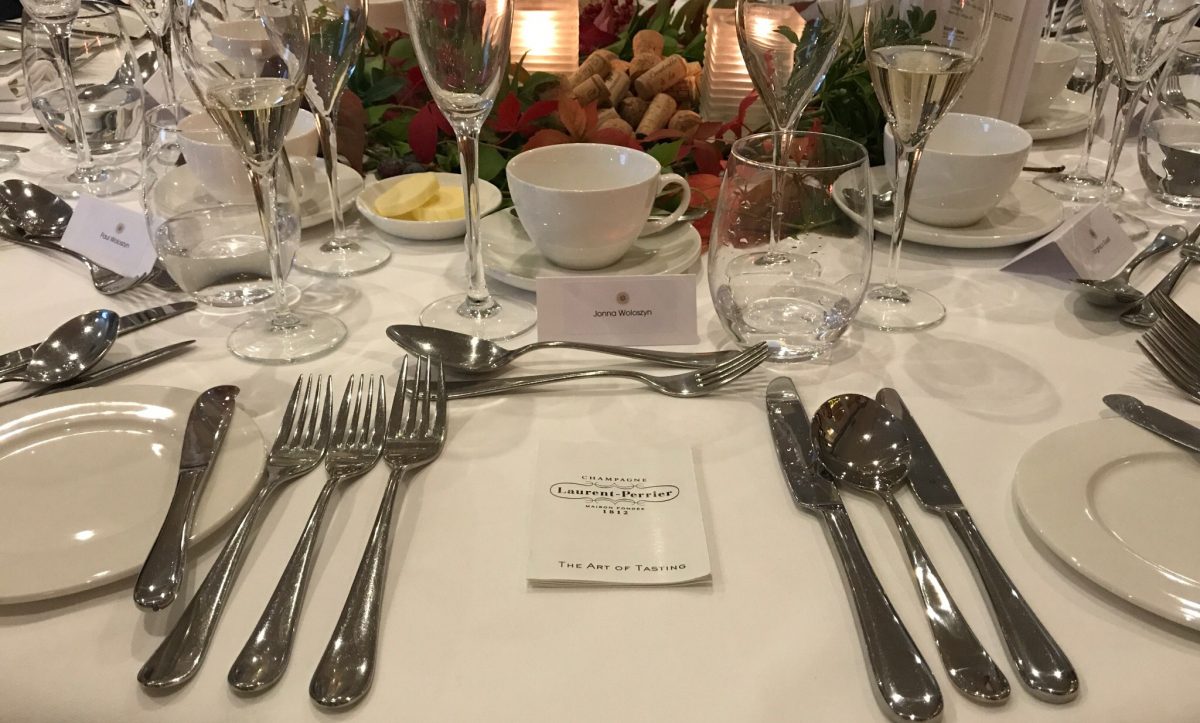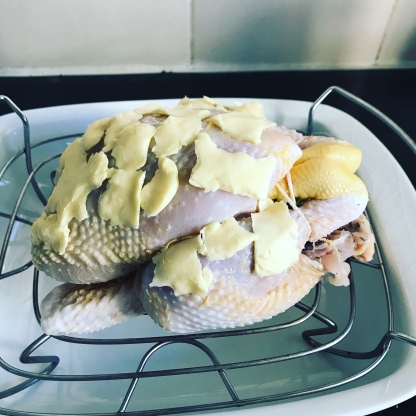This recipe isn’t for those looking for the quickest way to roast a whole chicken, but it truly is the one that gives you that extra special, juiciest one. Years ago, when I was practicing the cooking of roast chicken, I must’ve gone through so many different instructions. At the time I came across this recipe, I was a big fan of Heston Blumenthal, so I had to try his recipe. And boy, is this still the best, most perfect roast chicken I’ve ever had! It may seems like it requires a lot of effort and time, and yes, you may need to be organised with your time management, but after the short prep for the steps at the beginning you have a lot of free time. I don’t always do the brining the day before, but if you want it very special I would recommend you try. I’ve served mine with roast potatoes click here for my recipe, Vichy carrots, Yorkshire pudding click here for my recipe, minted pea puree and gravy made with the cooking juices of the chicken.
6% brine
5 litres water
300g table salt
Chicken
1.5- 2kg whole chicken
1 lemon
bunch of thyme
125g butter, plus extra for rubbing onto the skin
30ml dry white wine (I use Sauvignon Blanc)
Gravy
20ml dry white wine
250ml chicken stock
1 tsp Dijon mustard
1 sprig of tarragon (leaves only)
1 sprig of parsley
1. To make the brine, mix the salt with water, and warm until dissolved. I do this with about 3 litres of water, and then add the remaining two litres afterwards, as this will help brine cool down quicker.
2. Place the chicken in a container, large enough for the chicken to be submerged in the water entirely. Once the brine has cooled down, pour over the chicken. Cover with clingfilm, and keep in the fridge overnight.

3. Remove the chicken from the water, and dry with kitchen tissue. Remove the wishbone (this will make carving easier).

4. Bash the lemon on the table a few times, and stab all around with a sharp knife. Place inside the chicken, together with half of the thyme. Place the bird on a roasting rack, and rub some butter on the skin.
5. Heat the oven to a very low temperature of 80°C / 180°F, and cook the chicken until the inside temperature of the thickest part of the breast is 60°C / 140°F (official recommendations are usually for the inside temperature to be 75°C / 165°F, if worried you can always cook until that. I have however never had any problems with cooking to the lower temperature). The cooking should take about 3-4 hours.

6. Take the chicken out of the oven, and rest for at least 45 minutes. I sometimes get to this stage early in the day, which then allows me to go out, and continue once I’m back. Or, during the resting you can make your roast potatoes and Yorkshire puddings.
7. Melt the butter in a pan and add 30ml white wine and a few sprigs of thyme. Bring to boil, then remove from the pan from the heat and use the melted butter to baste the chicken before and during browning.
8. Heat the oven as high as it goes. Once the resting time has elapsed, put the chicken back in the oven for about 10 minutes, until golden brown, but taking care it doesn’t burn. Once coloured, remove from the oven. Keep on a cooling rack. Season your carved chicken with salt and black pepper.

9. Add white wine to the roasting tray with the cooking juices, and place on the hob over medium heat. Scrape the edges and bottom of the tray, and stir. Add the chicken stock, and reduce until thickened to a sauce. Strain into a small saucepan.

10. Before serving, stir in the mustard and warm through. Add the finely chopped parsley and tarragon, and season with salt and black pepper.






